Key Components for an Efficient Kitchen Space
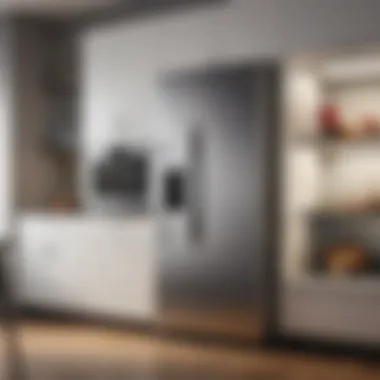

Intro
Creating a functional kitchen is akin to establishing a small universe within your home where efficiency takes precedence. A well-thought-out arrangement not only streamlines the cooking process but also breathes life into meal preparation, making it more enjoyable. This space can transform busy weekday dinners into culinary adventures, provided that the essential elements are in place.
To delve deeper, let's start by examining the various facets that contribute to a well-functioning kitchen. A blend of thoughtfully chosen appliances, practical tools, smart storage solutions, and pantry essentials are what allow for efficient cooking. Whether you’re whipping up a quick meal after a long day or hosting family and friends for a festive feast, understanding these key components can significantly enhance your cooking experience.
In this article, we will look at critical components for creating an organized kitchen setup. We'll analyze the must-have appliances that facilitate cooking while saving time and effort. Storage solutions will also be scrutinized, ensuring every spoon, whisk, and ingredient has its rightful place. Following that, we’ll identify pantry essentials that serve as the backbone of your culinary creations. Ultimately, this exploration aims to equip busy individuals and families with robust strategies to create an efficient and pleasurable cooking environment.
Key Kitchen Appliances
In any kitchen that strives to function well, the right appliances are essential. They not only simplify tasks but also enhance the overall cooking experience. The effective combination of appliances can turn mundane meal preparation into a smooth affair, making it not just efficient but enjoyable. Without the right tools at hand, even the most seasoned cook could find chores tedious and time-consuming. Thus, understanding the significance of these key kitchen appliances is a priority.
Essential Cooking Appliances
Stovetop and Oven Considerations
When considering cooking appliances, the stovetop and oven duo is the cornerstone of any kitchen. Their role can't be overstated; together, they form the basis of most home cooking. A well-chosen stove allows for various cooking methods, from frying to simmering. Gas models offer the advantage of instant heat control, while electric variations are often praised for their even cooking.
A unique aspect of modern stoves is the versatility of dual-fuel ranges, which combine a gas stovetop with an electric oven. This configuration offers the benefits of both worlds, creating an environment where precision in cooking is readily achievable. However, one must also consider the drawbacks, such as installation complexities and the cost involved.
Understanding Microwave Functions
Microwaves have transformed how we approach meal prep and heating. They offer a speed that traditional methods can’t quite match. Understanding microwave features—like defrost settings, sensor cook technology, and pre-programmed meals—can greatly improve their effectiveness in a kitchen.
One key characteristic that sets microwaves apart is their ability to retain moisture, making them ideal for reheating leftover dishes without making them dry. However, one must also remain aware of certain limitations, like uneven heating, which can occasionally leave cold spots in food if not used correctly.
Choosing a Reliable Blender
A blender is another indispensable appliance for both daily cooking and entertaining. Whether for smoothies, soups, or sauces, the importance of having a powerful and dependable blender cannot be overlooked. When selecting a blender, look for features like wattage and blade design, as they play a significant role in blending efficiency.
Unique to modern blenders is their ability to handle tough ingredients, making them a great choice for those who enjoy incorporating superfoods or fibrous vegetables into their recipes. On the downside, higher-powered models can also come with a steeper price tag, which may not suit every budget.
Refrigeration Needs
Different Types of Refrigerators
Refrigerators come in various styles and sizes, each serving distinct needs that cater to different lifestyles. From compact units suitable for small kitchens to spacious, side-by-side models, the choice you make can significantly impact food preservation and accessibility.
One aspect to consider is energy efficiency; modern refrigerators often boast better energy ratings compared to older models. This can lead to significant savings on electric bills over time. Each type of refrigerator presents unique advantages and disadvantages. For instance, while top-freezer models often offer more space per dollar, French-door designs allow easier access to fresh produce but might come at a higher price point.
Efficient Freezer Organization
The way you organize your freezer is equally critical. Taking the time to arrange foods by category or usage frequency can save valuable minutes when cooking.
A standout characteristic of an organized freezer is the ability to prevent waste by keeping items visible, thus reducing the chances of forgetting what’s inside. Implementing clear bins or labeling shelves can further streamline the process. However, careful organization requires an initial commitment and may necessitate regular upkeep to maintain order.
Maintaining Ideal Food Storage Temperatures
Finally, understanding how to maintain ideal food storage temperatures is essential. Proper temperature regulation keeps food safe and fresh. The standard refrigerator temperature is typically set between 35°F to 38°F, while freezers should be at 0°F to preserve everything properly.
An essential characteristic of proper temperature management is the function of built-in thermometers in modern units, allowing cooks to monitor conditions easily. However, if these temperatures are not consistently maintained, issues such as spoilage and foodborne illnesses can arise, creating health risks and extra waste.
“The right appliances can turn cooking from a chore into a delightful experience, making meal prep as smooth as butter.”
The importance of key kitchen appliances cannot be overstated in achieving a functional kitchen. By carefully selecting and maintaining these tools, anyone can create an efficient cooking environment that not only meets their needs but also makes the joy of cooking accessible to all.
Cutting and Preparation Tools
In the realm of culinary arts, Cutting and Preparation Tools hold significant weight in creating an efficient kitchen workflow. The right tools can make or break the cooking experience, transforming the mundane task of chopping, slicing, and measuring into an enjoyable and streamlined process. With the right cutting tools, preparation time is minimized, allowing cooks to focus on the joy of cooking instead of wrestling with ineffective implements.
Knives and Cutting Boards
Types of Knives for Various Tasks
Different categories of knives cater to diverse culinary needs, making it vitally important for every kitchen to be equipped with a suitable selection. From the sturdy chef’s knife, designed to handle a multitude of food preparations, to the delicate paring knife, perfect for intricate tasks, each knife serves its purpose. A chef’s knife stands out for its versatility.
"A good knife is an extension of your hand; it aids in executing your culinary vision with precision."
One unique feature of a chef’s knife is its broad blade, useful not just for chopping but also for crushing garlic or herbs. The ideal choice for a daily cook, owning a high-quality chef’s knife can improve efficiency and accuracy in meal preparation. However, it's vital to note that different knives require different handling techniques, which may have a learning curve.
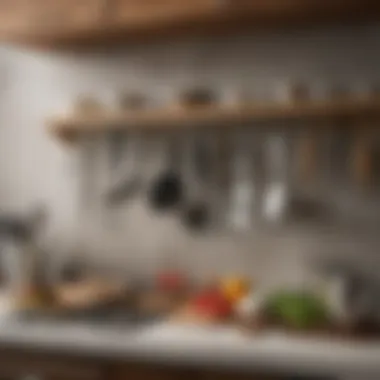
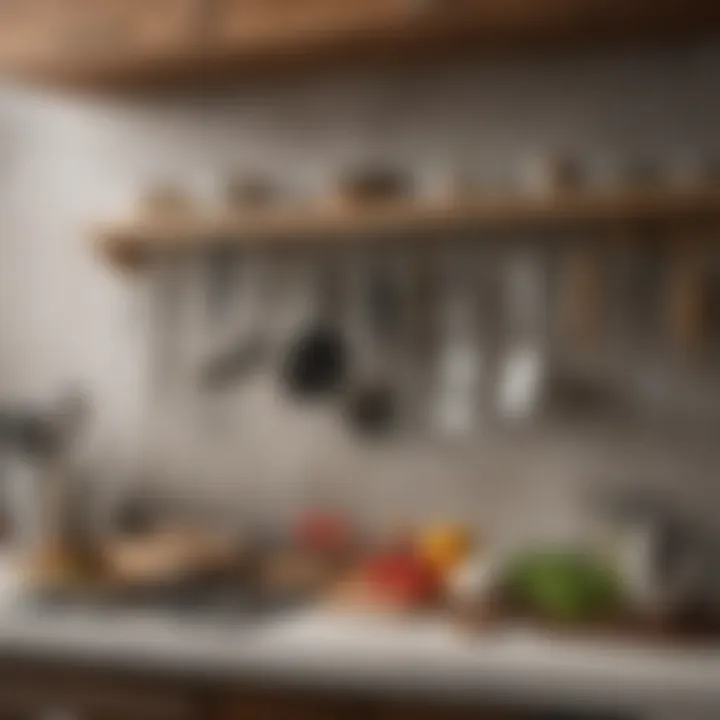
Choosing the Right Cutting Board Materials
The surface on which ingredients are prepared can dramatically influence the ease of cooking. Choosing the Right Cutting Board Materials is crucial as it impacts food safety and knife longevity. Consider wooden cutting boards; they are often preferred for their minimal wear on knife blades and aesthetic appeal.
On the flip side, plastic cutting boards are highly practical for raw meat, as they are dishwasher safe and can be sanitized easily. Each material has its advantages and drawbacks, and understanding these can aid in making the most educated choice for your kitchen. Less durability is often a concern with plastic boards, as they can warp over time.
Knife Maintenance Practices
Proper care of knives is a pillar of both longevity and safety in the kitchen. Knife Maintenance Practices include regular honing and professional sharpening when necessary. Keeping edges sharp not only ensures more precise cuts but also reduces the chance of accidents, as dull knives can slip and lead to mishaps.
Moreover, it's beneficial to have a designated storage solution for knives, like a magnetic strip or a block, as it protects their edges and prevents cross-contamination. Poorly maintained knives can become ineffective and pose safety risks, thus highlighting the necessity to prioritize maintenance in kitchen routines.
Measuring Instruments
Selecting Precise Measuring Cups
In the world of cooking, accurate measurement of ingredients plays a vital role, particularly for recipes that rely on chemistry, such as baking. Thus, Selecting Precise Measuring Cups becomes paramount in achieving consistent results. Available in various materials, the choice of measuring cups can impact durability and ease of use.
Opt for glass measuring cups; they're stable and often labeled for easier reading. However, plastic options are lightweight and may not break easily, making them popular among many home cooks. Nevertheless, glass rarely warps, giving it a slight edge in certain situations.
Balancing Liquid vs Dry Measurement Techniques
Understanding the Balancing Liquid vs Dry Measurement Techniques is also crucial for the well-executed dishes. Liquids in measuring cups pour freely and easily, while dry ingredients often require leveling off for accuracy. This fundamental difference influences how ingredients interact during cooking, necessitating knowledge of proper measurement methodologies.
For instance, when measuring flour, one might find it beneficial to spoon the flour into the cup and then level it off, thus avoiding packing it down, which can result in using too much flour. Avoiding such inconsistencies plays a pivotal role in creating a successful dish.
Importance of a Kitchen Scale
Rounding out the discussion, the Importance of a Kitchen Scale can't be overstated, especially in precise cooking and baking. Utilizing a kitchen scale fosters accuracy, taking the guesswork out of measurements. Additionally, weighing ingredients often yields a better end product, as it mitigates variations that come with cup measurements.
A digital scale can provide quick readings, and many modern models offer various measurement units, which adds to their versatility. Notwithstanding, reliance on measuring cups has its merits; a balance of both methods may yield the best results.
In summary, understanding these Cutting and Preparation Tools enables a smoother and more efficient cooking process, crucial for any aspiring chef or ambitious home cook engaged in their culinary endeavors.
Cooking Utensils
Cooking utensils are paramount in any kitchen. They not only influence the ease with which a meal is prepared but also affect the food's final taste and texture. Having the right selection of utensils is akin to an artist possessing diverse brushes; without them, even the finest ingredients may not reach their full culinary potential. In this segment, we will delve into both basic and specialty cooking tools that are essential for creating culinary masterpieces.
Basic Cooking Utensils
The Versatility of Wooden Spoons
Wooden spoons are an absolute staple in kitchens around the world. Their versatile design makes them suitable for a variety of tasks. Whether you're stirring a pot of stew, scraping the bottom of a pan, or mixing batter, wooden spoons offer a gentle touch. One of their key characteristics is their ability to withstand heat without melting or warping. This is particularly beneficial when you’re working with hot ingredients, as you won’t have to worry about chemicals leaching into your food.
A unique feature of wooden spoons is their surface. Unlike metal or plastic, wooden spoons are less likely to scratch your cookware, preserving the quality of your pots and pans. While they do require a bit more care (you must wash them by hand to maintain their lifespan), their durability and natural aesthetics have made them a popular choice. In short, wooden spoons bridge functionality and elegance in the kitchen.
Optimal Spatulas and Turners
Spatulas and turners serve as the unsung heroes of cooking. The optimized design allows for easy flipping and serving of foods. Materials vary widely, from silicone to metal, catering to different cooking styles and tools. Silicone spatulas are heat-resistant and won’t scratch non-stick pans, makig them top-notch for delicate cooking. Conversely, a good metal turner excels when lifting heavier foods, such as grilled meats.
The uniqueness of spatulas lies in their adaptability. They can be found in numerous shapes, making them suitable for everything from delicate egg flipping to turning hearty burgers. One disadvantage could be that if not chosen wisely, they might break or bend under pressure, which is why selecting the right material and design matters so much.
Selecting the Right Ladle
A ladle is often overlooked, yet it plays a crucial role in the kitchen. The primary function is to serve soups or sauces, but choosing the right one can make a significant difference in meal prep. A well-designed ladle will have a deep bowl to hold liquids efficiently, and a sturdy handle for full control when serving.
Another key characteristic to consider is the size. Ladles come in various sizes, and selecting one depends on the type of dishes you prepare regularly. A large ladle can serve stews, while a smaller one is perfect for sauces. With some ladles being dishwasher-safe and others requiring hand-washing, weighing convenience against quality is essential. While they might not seem monumental, a proper ladle can elevate the dining experience by making serving easier and cleaner.
Specialty Cooking Tools
Specialty cooking tools bring flavor and efficiency into the kitchen. They’re designed for specific tasks that elevate the cooking experience.
Exploring Whisks and their Functions
Whisks are an essential tool often associated with baking, yet their role transcends this. Their primary function is to incorporate air into mixtures, providing a light, fluffy texture. From whipped cream to beaten eggs, a whisk can transform the consistency with ease.
The key characteristic of whisks lies in their design. The wires can be made of stainless steel or silicone, allowing for diverse applications. A stainless steel whisk excels in durability and heat resistance, while silicone whisks are gentle on non-stick surfaces. However, silicone often doesn’t whip as effectively as metal since it may not incorporate air as efficiently. Strength and clever design make whisks indispensable tools in the hands of both amateur cooks and professional chefs.
Importance of Tongs in Cooking
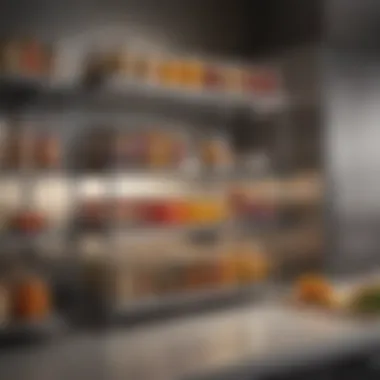
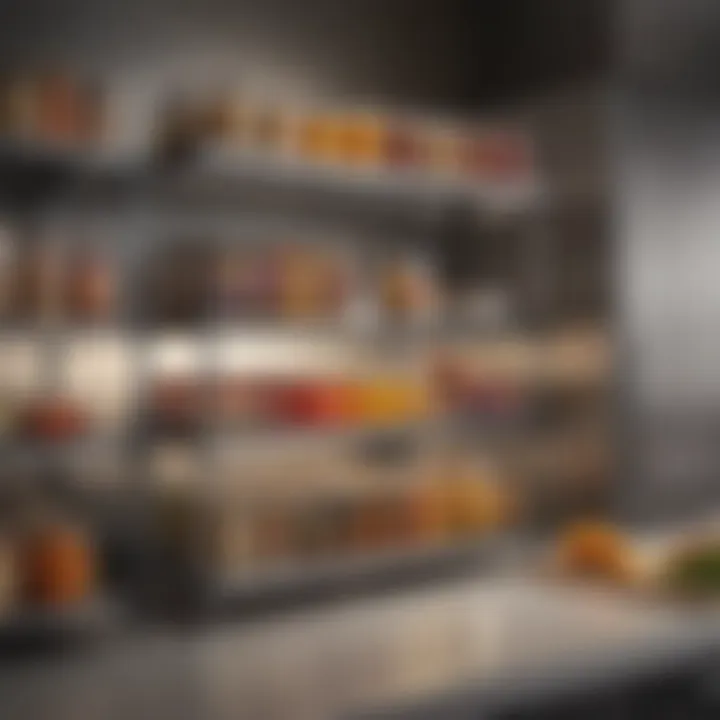
Tongs can be viewed more as an extension of your hand in the kitchen. Their functionality extends from flipping steaks on the grill to serving pasta. Tongs provide control and precision, offering a safe way to handle hot food. A quality pair of tongs will typically feature a locking mechanism for easy storage and be made from heat-resistant materials to handle a variety of cooking tasks.
The unique advantage of tongs lies in their adaptability; they can be used with almost any food type, be it raw or cooked. However, it’s worth mentioning that choosing a pair that’s easy to clean and sturdy enough to hold weight is crucial to ensure longevity and reliability.
Using a Colander Effectively
A colander is one of those tools that people might not think much about until they need it. It is designed to drain liquids from foods like pasta or wash fresh vegetables. Its primary function is simple, yet essential and effective.
A colander's key characteristic is its perforated design, allowing for quick and uniform drainage. Whether using a plastic or metal version, each has its advantages. Metal colanders tend to be more durable, while plastic ones are lightweight and easier to store.
The unique feature that sets a good colander apart includes its ability to rest securely in the sink, providing solid drainage without toppling over. While it might seem trivial, an efficient colander can save you time and prevent messy spills, ultimately enhancing your kitchen experience.
Takeaway: Investing in quality cooking utensils and tools is foundational for a functional kitchen. They not only streamline cooking processes but also elevate the quality of your dishes.
Storage Solutions for the Kitchen
In every bustling kitchen, finding a way to efficiently store tools, ingredients, and appliances can feel like trying to fit a square peg in a round hole. Yet, proper storage solutions are the unsung heroes of an organized and functional kitchen. They not only create space where chaos once reigned, but also enhance the overall cooking experience by ensuring that everything is conveniently at hand. Consider the impact of a well-organized space: it improves efficiency, reduces time spent looking for items, and minimizes frustration during meal preparation.
Cabinet and Countertop Storage
Utilizing Vertical Space Efficiently
One cannot emphasize enough the value of vertical storage. Many kitchens suffer from limited floor space, yet ample wall space often goes to waste. Utilizing vertical space efficiently transforms unused wall areas into prime storage spots. This method is particularly advantageous for a variety of reasons. First, it keeps countertops clear, lending an air of spaciousness, which can be calming in a typically busy environment. Second, hanging pots, utensils, or spices can turn storage into a decorative aspect of your kitchen.
A unique characteristic of this approach is its customizability—install shelves, racks, or magnetic strips to suit your needs. However, one must be cautious; while this method maximizes space, overloading shelves can lead to accidents or damage.
Choosing Functional Shelving Units
When evaluating shelving units, functionality should reign supreme. A well-chosen shelf not only serves to display items but can also enhance the aesthetic of the kitchen. It’s important to consider the depth of the shelves, as deeper shelves can hold bulkier items but can also become cluttered more quickly.
A significant advantage of functional shelving is its adaptability—adjustable shelving can grow with your needs over time, making it a smart investment. However, some shelving options may lack stability if they are not anchored properly, potentially becoming a hazard rather than a help.
Assessing Storage Containers: Glass vs. Plastic
When it comes to storage containers, both glass and plastic have their merits. Glass containers often provide better airtight seals, helping to keep food fresh for longer. They are also microwave-safe and can transition from freezer to oven, simplifying meal prep and storage. On the flip side, they tend to be heavier and more prone to breaking, which can be a downside, especially in a family-friendly kitchen.
Plastic containers, on the other hand, are lightweight and less breakable, making them a popular choice for many cooks. However, they can absorb stains and odors over time, and not all plastics are safe for microwaving or heating. Critical consideration should be made about the trade-offs between durability and functionality when selecting the right containers for your kitchen.
Pantry Essentials
Staples for Quick Meal Preparation
Every cook knows the importance of having a well-stocked pantry. Staples for quick meal preparation form the backbone of meal planning. Items like pasta, rice, canned beans, and a selection of spices can turn a few ingredients into a delightful dish in no time.
Consider the versatility of staples like quinoa or canned tomatoes, which can play central roles in many recipes. While they serve as a quick fix, one must be mindful of the expiration dates and try to rotate older items to the front—nothing is worse than discovering a long-forgotten can at the back of the pantry.
Organizing Pantry Items for Easy Access
Organizing pantry items for easy access is a must in any culinary space. Installing pull-out shelves or using tiered organizers can vastly improve visibility and accessibility. When ingredients are visible, finding what you need becomes a walk in the park rather than a scavenger hunt. Many cooks find it beneficial to group items by type or recipe to further streamline this process.
This organization method not only saves time but can also prevent overbuying items that you might already have nestled at the back of the cupboard.
Proper Storage Methods for Dry Goods
Finally, knowing proper storage methods for dry goods can extend the lifespan and freshness of your ingredients. Airtight containers are critical for grains, flours, and sugars, as they keep moisture and pests at bay. Labeling these containers with dates can help track freshness and avoid pantry waste.
A unique feature of this practice is investing in a vacuum-sealer for bulk purchases. While this can demand initial effort, it pays off quickly in convenience and savings. However, it can be an investment, so assess how often you'll need long-term storage before diving in.
In essence, a well-planned storage strategy in the kitchen not only enhances efficiency but also ensures a smoother and more enjoyable cooking experience. The blend of vertical space utilization, functional shelving, and pantry organization contributes profoundly to a kitchen's overall functionality.
Kitchen Layout and Organization
The layout and organization of a kitchen play a crucial role in how effective and enjoyable the cooking process can be. A well-planned kitchen layout isn’t just about having beautiful cabinets or the latest appliances; it can fundamentally alter how efficiently you work in your space. When you are rushing to prepare dinner after a long day, the last thing you want is to trip over clutter or waste time searching for utensils buried beneath stacks of pots. Moreover, understanding layout elements such as the work triangle, meal preparation flow, and the strategic use of kitchen islands can significantly streamline your cooking experience.
Designing an Efficient Workspace
Understanding the Work Triangle
The work triangle concept is central to kitchen design. It establishes an optimal distance between the sink, stove, and refrigerator, creating a triangular work zone that allows for smooth transitions while cooking. By minimizing movement between these key areas, you can save time and energy. This characteristic of the work triangle makes it a favored choice among kitchen designers.


A unique feature of this design principle is its adaptability to different kitchen shapes – be it galley, L-shaped, or U-shaped. Each can accommodate the triangle while maximizing efficiency. Although some critics point out that the rigid adherence to the work triangle might not fit every home’s requirements, most agree that its use can enhance workflow.
Meal Preparation Flow Considerations
Meal preparation flow looks at how you move within your space as you cook. This includes how ingredients are retrieved, prepared, and cooked. For instance, placing cutting boards next to the sink or stove allows for a seamless cooking process. This consideration is vital as it contributes directly to the efficiency of the cooking process.
The primary characteristic of meal preparation flow is its focus on convenience, allowing you to streamline tasks. Moreover, when rearranging your kitchen to favor flow, consider the placement of your appliances and tools. However, an overly rigid approach can lead to confusion, especially if unexpected guests decide to lend a hand in the kitchen.
Maximizing Kitchen Island Utility
In modern kitchens, the kitchen island often serves multiple functions – extra prep space, storage, even as a casual dining area. Properly utilizing this space can bring numerous benefits, such as improving the layout and enhancing social interactions while cooking.
The flexible use of kitchen islands is what makes them popular. You can include appliances, build-in sinks, or even a cutting board area right into the island. However, careful planning is needed; an island that’s too large can disrupt the flow of movement in the kitchen, while a small one may not serve its purpose.
Organizing Tools and Appliances
Decluttering Strategies
Decluttering strategies are essential to maintaining an organized kitchen. By regularly assessing what you have and getting rid of items you don’t use, you can create space for what’s really necessary. A major characteristic of decluttering is its ability to make the kitchen feel more open and accessible.
Developing a habit of questioning the usefulness of every tool you have can help maintain this organization. However, it’s easy to become overly attached to appliances that simply occupy space. Remember, the focus should be on functionality.
Creating Zones in the Kitchen
Creating zones in the kitchen is all about designating specific areas for related tasks, such as cooking, preparation, and cleanup. This method helps streamline processes while cooking, making it easier for multiple people to work without getting in each other’s way.
The key benefit here is improved efficiency, allowing you to complete tasks without unnecessary back tracking. However, your kitchen’s layout will dictate how many zones you can realistically create. If space is tight, you might have to combine some tasks into one area.
Utilizing Drawer Dividers
Drawer dividers are simple yet incredibly effective tools for keeping everything from utensils to spices organized. When you use dividers, you save time as each item has a designated spot. This characteristic makes them a top choice for anyone wanting to maximize their kitchen's potential.
Dividers allow for tailored organization, adding a personal touch that can make cooking more enjoyable. Nonetheless, they aren’t acure-all solution; without proper management, even a divided drawer can become chaotic if it isn’t maintained regularly.
Proper kitchen layout and effective organization are not just matters of aesthetics; they are the backbone of an efficient cooking environment that uplifts the entire experience.
In sum, understanding how to optimize your kitchen layout and organization can significantly enhance your cooking abilities and make daily tasks far more manageable.
Food Storage and Preservation
Food storage and preservation are pivotal aspects of a well-functioning kitchen. Effective storage methods can drastically reduce food waste and ensure that ingredients remain fresh for longer. This not only helps to save money but also guarantees that meals prepared are tasty and safe to eat. In a fast-paced environment, convenience is key, and understanding how to store food properly makes day-to-day cooking much simpler.
Understanding Food Preservation Techniques
Importance of Vacuum Sealing
Vacuum sealing is a game-changer for many home cooks. It removes air from food packaging, preventing oxidation and bacterial growth. This process can extend the lifespan of food significantly. A key characteristic of vacuum sealing is its ability to minimize freezer burn for meats and other items. Home chefs often rave about how it helps to maintain flavor and texture, making it a consistently popular choice.
One unique feature of vacuum sealing is its versatility—it can be used for sous vide cooking or even marinating food quickly. On the downside, some may find the initial investment in a vacuum sealer daunting, but for avid home cooks, the benefits often outweigh this concern.
Methods for Freezing Foods
Freezing food is another essential preservation technique that can be greatly beneficial. By lowering the temperature, freezing halts bacterial growth and preserves nutritional value. For many busy individuals, having pre-prepared meals on hand can be a lifesaver. One key highlight of freezing foods is batch cooking—preparing big portions in advance and freezing them for later use, making meals easier and faster on weeknights.
However, not all foods freeze similarly. Foods with high water content, like cucumbers, don’t fare well in the freezer as they can become mushy upon thawing. Hence, it's important for cooks to know which items freeze well and which don’t, ensuring that they get the best out of their preserved meals.
Canning Basics for Long-Term Storage
Canning is a reliable method for long-term food storage that many home cooks find invaluable. This technique involves sealing food in jars and heating them to kill bacteria. It’s a popular choice for preserving produce from an abundant garden harvest. One major advantage of canning is how it allows for the enjoyment of seasonal flavors year-round.
Canning also offers a unique feature: it allows the preservation of various food types—including fruits, vegetables, jams, and even meats. Yet, there’s a steep learning curve, as improper canning can lead to safety issues. By understanding the fundamentals and following detailed guidelines, home cooks can make the most of this rewarding preservation method.
Rotation and Management of Ingredients
Proper rotation and management of ingredients are equally crucial for a well-organized kitchen. Implementing efficient methods to ensure that ingredients are used in a timely fashion not only keeps food fresh but also promotes a seamless cooking experience.
Applying FIFO Principle Efficiently
The FIFO (First In, First Out) principle is fundamental for managing food inventory. This simply means that older ingredients should be used before newer ones. This method prevents food waste and ensures that nothing goes bad silently at the back of the pantry. One key aspect of FIFO is the ease of implementation—simply arrange items so that the oldest are in the front. Many cooks find it satisfying to see their pantry optimized this way.
That said, some may find it challenging to remember which items to use first, especially when dealing with multiple ingredients. Keeping an organized and clutter-free area can aid in this process, making it easier to apply FIFO effectively.
Labeling Ingredients for Clarity
Labeling ingredients plays a vital role in kitchen organization. Clear labeling helps in quickly identifying items and their expiration dates, which is key to efficient cooking and food safety. One of the best characteristics of proper labeling is that it creates a more streamlined cooking experience, allowing for quick ingredient selection.
However, using the wrong labeling method can lead to miscommunication—like using a permanent marker on containers that are washed frequently. Opting for waterproof, reusable label solutions can mitigate this issue, keeping kitchens tidy and straightforward.
Managing Fresh Produce Storage
Managing how fresh produce is stored can make a significant difference in their lifespan. Proper storage environments can inhibit decay and maintain the quality of fruits and vegetables. A crucial characteristic of this management is knowing which produce should go in the fridge versus what can be stored at room temperature. For example, potatoes and onions do best in cool, dark places away from light.
However, some might struggle with maintaining appropriate storage methods for various items due to space constraints. Allocating specific areas for each type of produce can alleviate this complication, making it easy to find exactly what you need for your meals.







